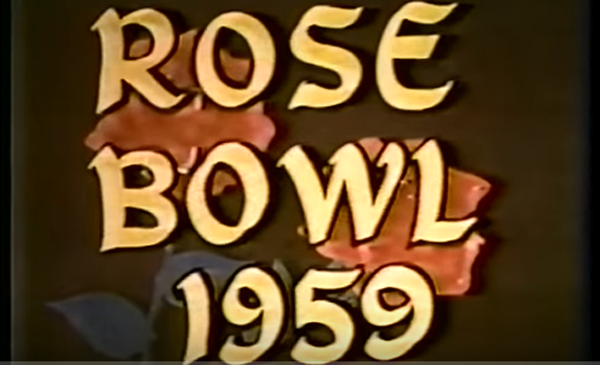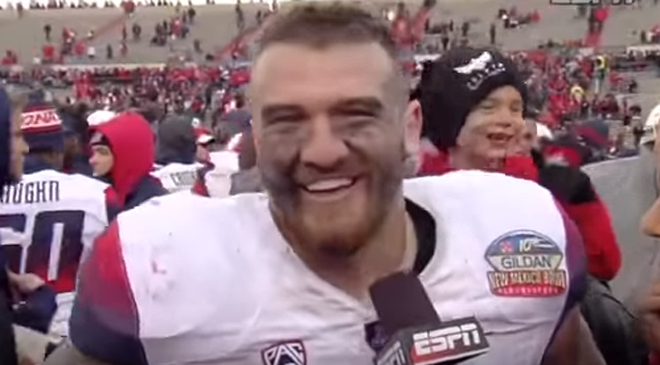To label college football recruiting an inexact science is patently false. That said, even the soundest of sciences have outliers.
Recruiting journalism was met with a level of skepticism in its early days – I suspect largely because it was based almost entirely online, and the media old guard seemed to view the internet as a passing fade.
Regardless the motivation behind it, in-depth college football recruiting, and especially recruiting-based team ranking, was often dismissed as meaningless. That’s since been disproven time-and-time, to such a point that there more writers attacking the antiquated mindset than those espousing it.
The proof is irrefutable. Alabama’s dynasty was built on repeated National Signing Day “championships,” and that’s no coincidence. Neither is the prevalence of the five-year top five recruiting programs dominating the national title game scene, as outlined here by Bill Connelly.
Pointing out the outliers isn’t a rebuttal of recruiting’s significance. Doing so is necessary, however, because recruiting is still one part of a greater equation.
The Pac-12’s most successful recruiters of recent years are USC and UCLA. Between them, they have zero conference championships since 2008. It’s no surprise then that two of the more noteworthy overachievers based on average recruiting rankings hail from the Pac-12, Oregon and Stanford.
Oregon is the only program outside of Connelly’s Top 20 to have appeared in a national title game, going back considerably further than even the five-year period tracked for his report.
On a national scale, Oregon is the outlier of all outliers, though Stanford, with its three Pac-12 championships in four seasons, isn’t far behind.
Stanford’s level of success is comparable with that of Wisconsin, a regular Top 25 finisher and contender for its conference title that has yet to play for a national championship. But whereas Stanford sprinkles in a Top 10-to-20 recruiting class, as it did this year, Wisconsin’s success is predicated entirely on overachieving.
The Big Ten will be an interesting case study in the coming years, because relatively paltry recruiting across the board gave Wisconsin more upward mobility. Urban Meyer’s enjoyed immediate success at Ohio State, both on the recruiting trail and on fall Saturdays, and Jim Harbaugh’s infused new life into Michigan’s recruiting.
If Wisconsin continue to win 10 games with regularity, and score the occasional Rose Bowl appearance, the Badgers will truly stand as a beacon for all the other facets that go into building a program.
Those facets include coaching, scheme and culture, strength programs and recruiting. Wait – recruiting?
Yes, the commonly agreed determiner of successful college football recruiting is seen on national signing day via star ratings. Unearthing hidden gems is a skill all its own, however.
Wisconsin’s thrived at this. Another great example in the same part of the country is North Dakota State, winner of five straight FCS championships.
The Bison dominate competition built primarily on unheralded high school prospects, sure, but NDSU has also found and developed under-recruited preps into NFL talents. Linebacker Kyle Emanuel flourished in his first season with the San Diego Chargers, and Bison quarterback Carson Wentz is a likely first-round draft pick.
Last July, I asked former North Dakota State Craig Bohl about finding such players, Wentz in particular. Bohl said it’s a matter of “knocking on every door.”
Wentz came out of Bismarck, North Dakota – “not the middle of nowhere,” Bohl told me, but not a recruiting hotbed, either.
Pinpointing such talent is one important step. The next is making connections early.
Before he wowed NFL scouts at January’s Senior Bowl week workouts, running back Kenneth Dixon wowed Louisiana Tech staff at little Strong High School in Strong, Arkansas.
Cal head coach Sonny Dykes, who recruited Dixon to Louisiana Tech, told me Dixon would have been a much more heavily pursued recruit had he played his high school ball in a more visible location.
Even still, bigger schools came after Dixon late into the recruiting process. Because Louisiana Tech built a connection with Dixon early, the running back said he felt at home with the program and remained true to the Bulldogs despite increased interest.
Such an approach isn’t exclusive to Group of Five and FCS programs. Arizona head coach Rich Rodriguez’s best player in four seasons in the Pac-12 was linebacker Scooby Wright, an early-round NFL talent who was a two-star prospect in Las Vegas the Bay Area.
Wright’s phenomenal play in 2014 was a catalyst in Arizona winning 10 games and the Pac-12 South championship. Rodriguez said in November 2014 that Wright’s low recruiting rating wasn’t a misfire by the services who grade prospects; Arizona simply noticed his upside before others and got in on his recruitment early.
Somewhere in the class of 2016 are the next Scooby Wright. The next Carson Wentz. The next Kenneth Dixon. Likewise, there are programs poised to outplay their star ratings.
These aren’t the rules to college football recruiting; these are the exceptions. Nevertheless, the exceptions are inevitable.














